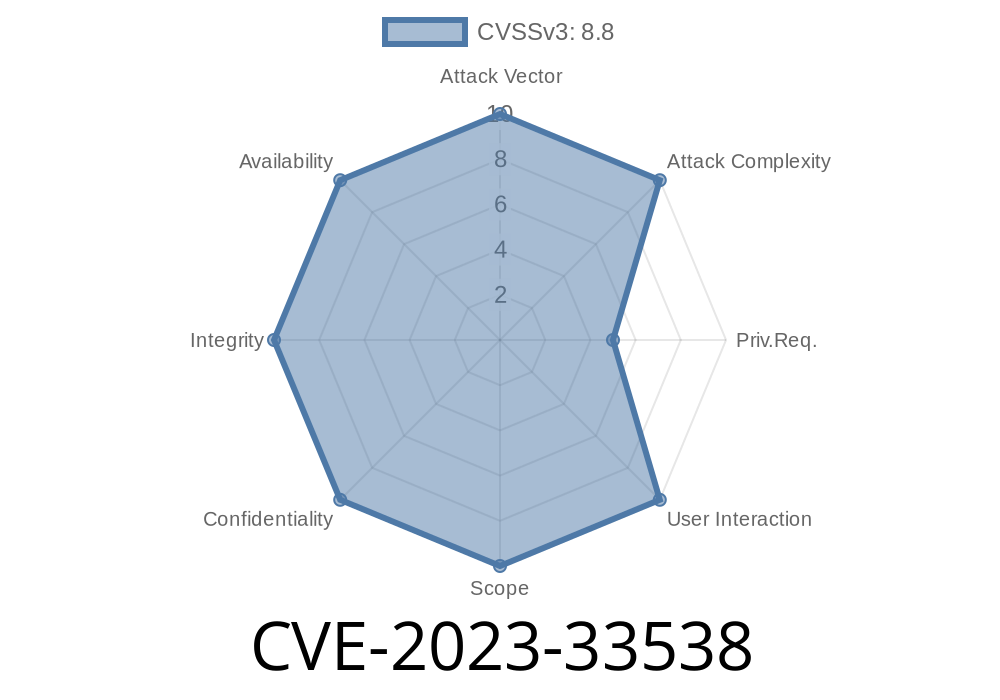A critical vulnerability labeled as CVE-2023-33538 has been discovered in TP-Link router models TL-WR940N V2/V4, TL-WR841N V8/V10, and TL-WR740N V1/V2. This vulnerability relates to a command injection flaw found in the /userRpm/WlanNetworkRpm component. This potentially allows attackers to execute arbitrary commands with administrative privileges, thus gaining unauthorized access to these routers.
Background
The TP-Link TL-WR940N, TL-WR841N, and TL-WR740N are popular wireless routers, widely used in homes, offices, and other environments with broadband internet connections. Unfortunately, a commonly occurring command injection vulnerability exposes users to security risks that could compromise their network and data.
Exploit Details
The CVE-2023-33538 vulnerability specifically lies within the /userRpm/WlanNetworkRpm component of these models, where malicious code can be executed. When successful, an attacker can run arbitrary commands with the privileges of the system administrator.
Here's a snippet of how the exploit would work
curl -H "Content-Type: application/x-www-form-urlencoded" -H "Referer: http://192.168..1/userRpm/WlanNetworkRpm.htm"; --data "ssid=network-name&wpa=3&psk=@'the_malicious_command-here'&interval=360" http://192.168..1/userRpm/WlanNetworkRpm-1
This command injection occurs when user-supplied data is improperly handled by the software. In this case, instead of properly escaping the input, it allows the attacker to break out of the data context and execute commands.
Suggested Mitigation Steps
If you are using any of the affected TP-Link models, it is highly recommended that you take the following steps to protect yourself from this vulnerability:
1. Update your firmware: TP-Link has released firmware updates to address CVE-2023-33538. Download the latest firmware version for your router from the official TP-Link website here.
2. Enable router firewall: Make sure your router's built-in firewall is enabled. This can help to block unauthorized access to your network.
3. Regularly change the router default credentials: Change the default username and password of your router, and update them regularly, to safeguard against unauthorized access.
More information about CVE-2023-33538 can be found from the following sources
1. Official CVE record: CVE-2023-33538
2. TP-Link security advisory: Security Advisory
Conclusion
In conclusion, the CVE-2023-33538 vulnerability is a significant security risk affecting TP-Link TL-WR940N V2/V4, TL-WR841N V8/V10, and TL-WR740N V1/V2 router models. By exploiting this command injection flaw, attackers can gain unauthorized access to routers and their networks. Protect your network by updating your firmware, enabling the router firewall, and regularly changing your router's credentials.
Timeline
Published on: 06/07/2023 04:15:00 UTC
Last modified on: 06/13/2023 18:53:00 UTC
